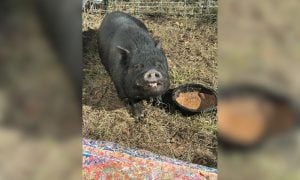Scientists have long been amazed by the spectrum of colors visible to different species — and now a new video camera system allows us to see the world’s vibrant colors the way animals see them, earth.com reports.
This revolutionary camera is the collective work of Assistant Professor Dr. Daniel Hanley at George Mason University (GMU), University of Sussex Research Fellow Vera Vasas, and the dedicated team of researchers at Hanley Color Lab at GMU. It records UV, blues, greens, and reds in unison — allowing us to see the world through the eyes of various animals.
What do animals actually see? @VeraVasas @HanleyColorLab &co present a camera system & video processing pipeline that record animal-perceived colors in motion, allowing us to study color signals in their full complexity #VisualEcology #PLOSBiology https://t.co/xBWgkP9zYB pic.twitter.com/yqTnsbfejO
— PLOS Biology (@PLOSBiology) January 24, 2024
“We can record the dances of peacocks and see how dazzling their feathers appear to peahens,” Hanley and Vasas wrote in The Conversation. “The iridescence of these feathers extends into the ultraviolet – our recordings show the feathers appear even more colorful for their target audience than to us.”
Previously, scientists used false color photography to create images of how other animals might see the natural world. This process could be exhausting and frustrating because researchers were forced to repeatedly move objects into the same place. The new camera system eliminates this tedious process.
“For example, taking photos of an iridescent peacock feather from a hundred different angles would require screwing on and off each filter a hundred times,” Dr. Hanley and Vasar said.
All creatures see things uniquely. While animals like dogs and cats can’t tell the difference between red and green, birds, bees, and butterflies can see in ultraviolet (UV) light. On the other hand, humans can see red, green, and blue light, but not UV. Seeing movement on the same spectrum as different species is groundbreaking for biologists, ecologists, and those who study animal behavior.
Lady Freethinker commends Dr. Hanley, Vasas, and the researchers who helped create this innovative tool. Seeing nature in all its astounding and singular colors can only help us understand the creatures we coexist with even better.








